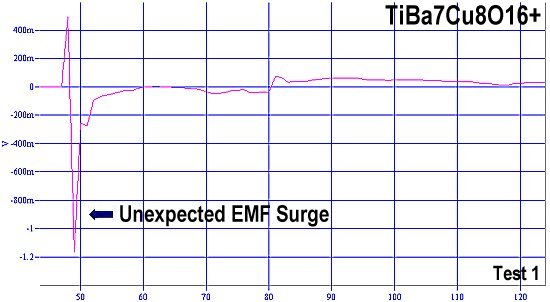
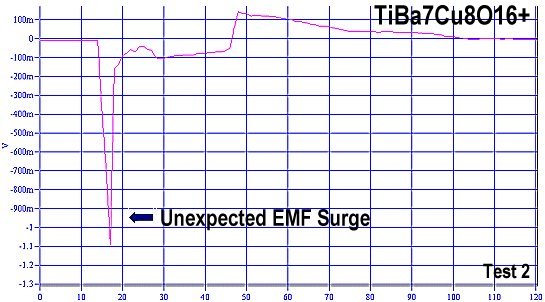


It's not often a new phenomenon is discovered in the physical sciences. Scientists like to think they have a good grasp of how nature works. However, recently during the discovery of a new family of N-type thermoelectric materials, an anomaly appeared. A compound, embedded with a low-volume-fraction superconductor, was generating voltages more than 40 times greater than the steady-state Seebeck coefficient predicted.
In an N-type thermoelectric material electrons are the dominant charge carriers. These electrons rush from the hot side to the cold side of the material when a temperature gradient exists. That migration produces a voltage potential (EMF - electromotive force) between the hot and cold ends. Electrons are also the charge carriers in a superconductor. They couple together in a mechanism known as Cooper-pairing in order to overcome the scattering action of lattice vibrations. If a thermoelectric material were 100% superconductive, no voltage would appear below its critical transition temperature (Tc). Zero internal resistance would prevent this. However, if there is just a small amount of superconductive material within a thermoelectric bulk, things get interesting.
In the plots at page top, a colossal voltage surge appears as the thermoelectric compound TiBa7Cu8O16+ is rapidly cooled at one end to -50 Celsius. This material contains a low-volume-fraction (VF) superconductor with a critical transition temperature (Tc) near 0 C. An EMF potential of around 1.1 to 1.2 volts appears consistently in repeated tests. In the below plot, slow warming tests of the same material showed a Seebeck coefficient of around 330 uV/K at -50C. This means a temperature differential of more than 3,300 degrees Kelvin should be required to produce a surge of 1.1 volts. Clearly something extraordinary is going on.
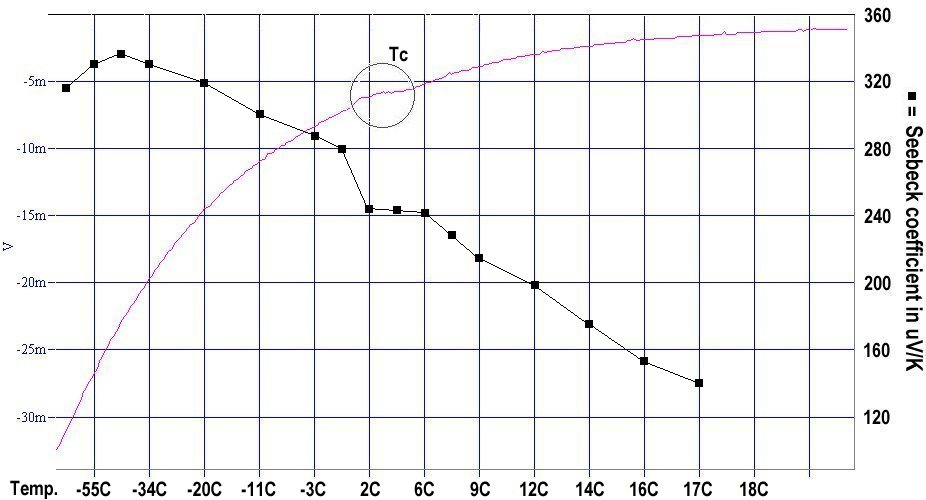
The below graphic illustrates the action of electrons when both thermoelectricity and low-VF superconductivity are at work in the same material. Electrons move from the hot side to the cold, generating voltage in accordance with the Seebeck effect. Simultaneously Cooper-pairing begins at the cold end and progresses toward the hot end as more heat is removed. This produces a supercurrent below Tc. Though the superconductor volume fraction is low (< 1%), the inrush of electrons encounter regions of coherent lattice vibrations much larger than the superconductor volume fraction. This "proximity effect", where nearby non-superconducting molecules take on superconductive properties,[1] may then facilitate "phonon drag", which can increase the Seebeck coefficient.[2] Empirical research has already found that phonons play a key role in high-temperature superconductivity.[3] Unfortunately this new phenomenon has only been observed during the rapid imposition of a temperature gradient. It has not been seen during slow cooling or slow heating. So it cannot be used as an enhancement tool for existing thermoelectric materials or applications.
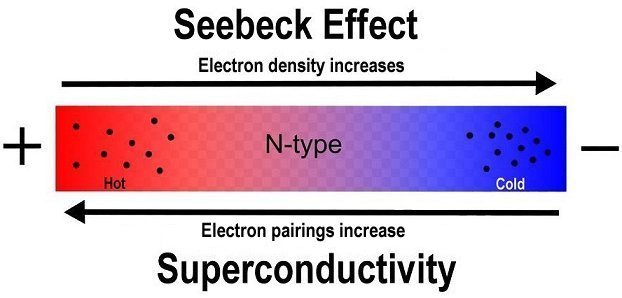
AUGUST 14, 2017, UPDATE: At first it was thought this phenomenon only occurred with N-type thermoelectric materials. However, a P-type material with formula SrTi0.9Sc0.1O3 has been found to also generate a colossal EMF surge when rapidly cooled at one end to -55 C. And its voltage surges are even stronger than the prototype - approaching 30 volts at times (shown below). This material also contains a low-volume-fraction superconductive phase. Resistance tests indicate a Tc near 4 Celsius. In these tests a 10 megohm shunt resistor was included to stabilize the digital voltmeter, due to a very high source resistance. The prototype had a high resistance as well, but did not require a shunt resistor.
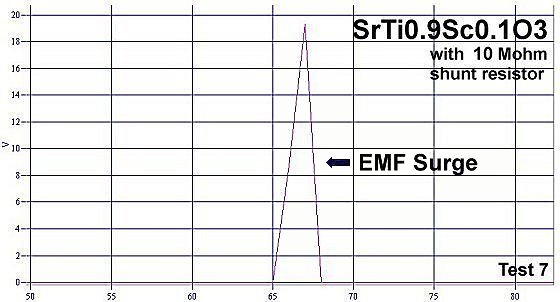
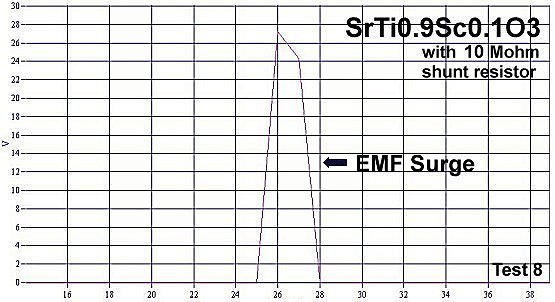
The below plot shows a direct resistance test, with a resistance drop appearing below 4 Celsius. Lines representing average resistance skew apart about 20 kilohms within the area circled. The jitter in the plot is most likely caused by the scandium doping.
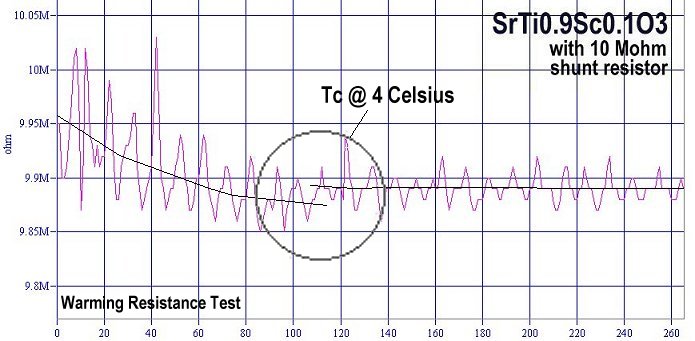
Synthesis of these materials was by the solid state reaction method. Stoichiometric amounts of the below precursors were mixed, pelletized, and then sintered for 10+ hours at 870C. After sintering the pellet was annealed for 10 hours at 500C in flowing O2.
Ti2O3 99.8% (Alfa Aesar) 0.42 grainE. Joe Eck
© 2017 - 2025 Superconductors.ORG
All rights reserved.
1. "The Long Range Proximity Effect: Pair Echos", W.A. Little and M.J. Holcomb, Journal of Superconductivity, February 1994, Volume 7, Issue 1, pp 175–180, 1993
2. "Colossal Seebeck effect enhanced by quasi-ballistic phonons dragging massive electrons in FeSb2", H. Takahashi, et al, Nature, Article number: 12732 (2016), doi:10.1038/ncomms12732
3. "More Support for Room Temperature Superconductivity in Background Noise", Superconductors.ORG, March 2014
 BACK to "News" page at Superconductors.ORG
BACK to "News" page at Superconductors.ORG